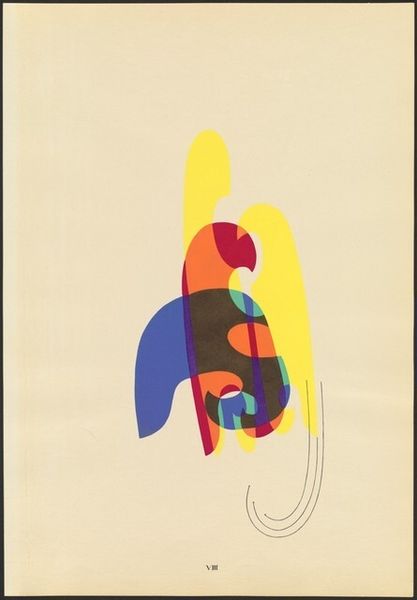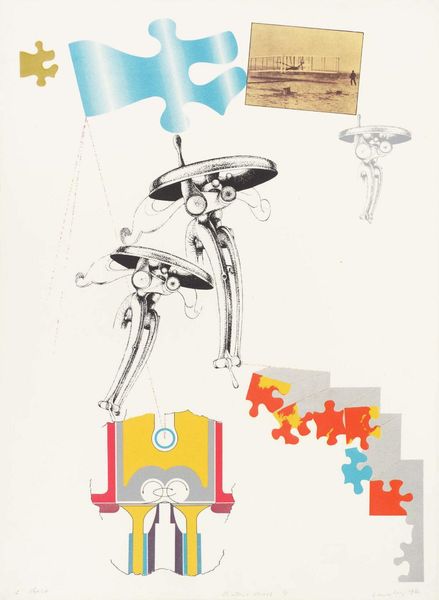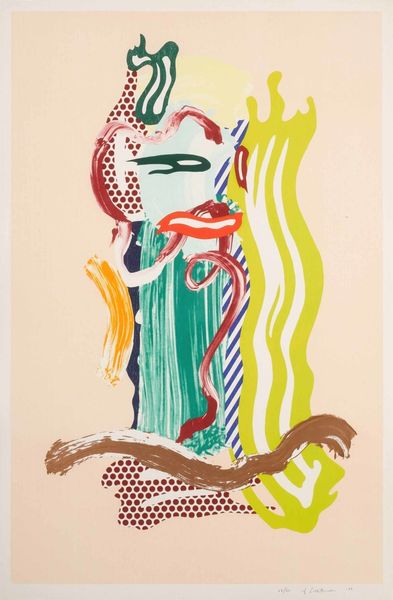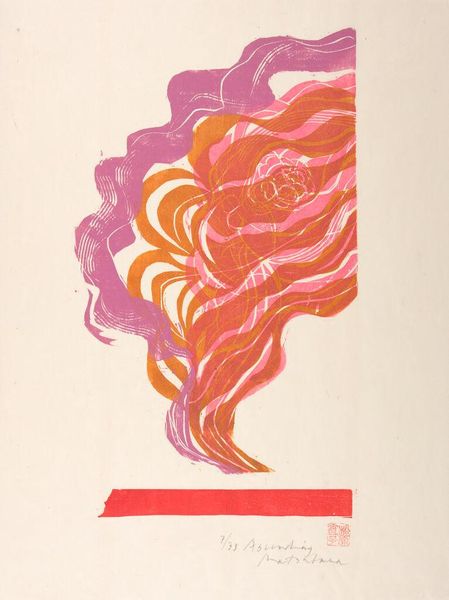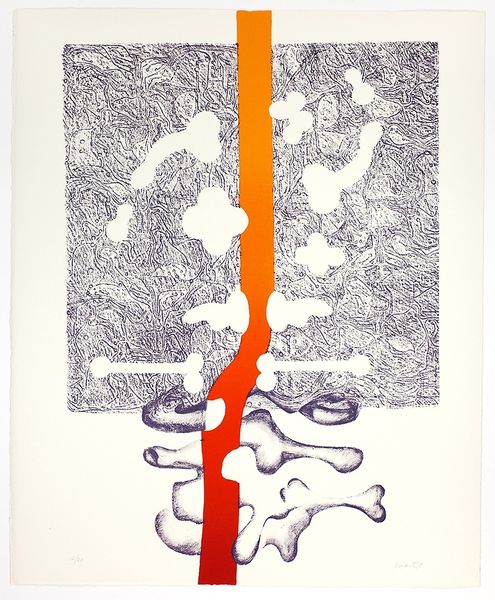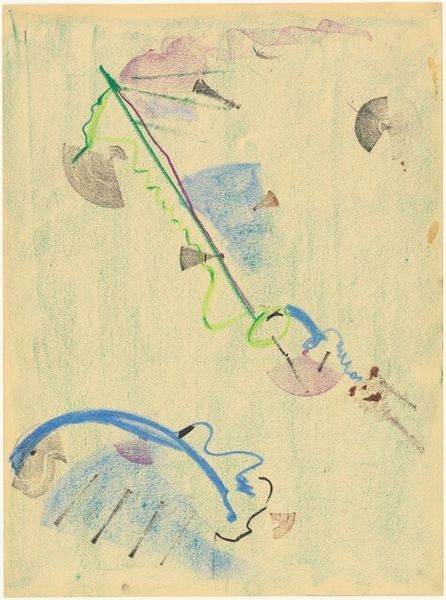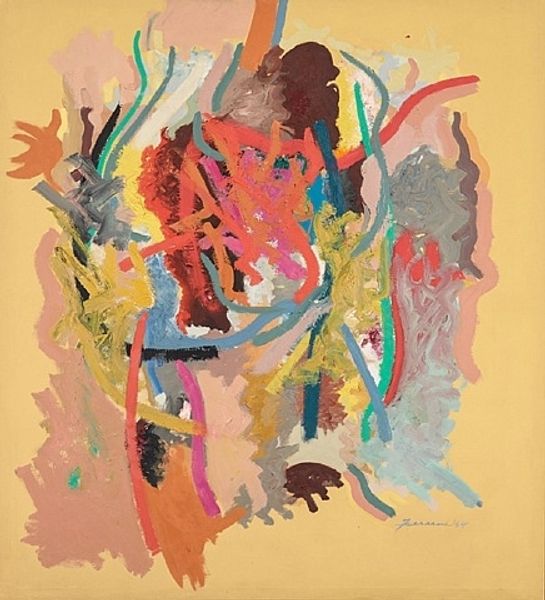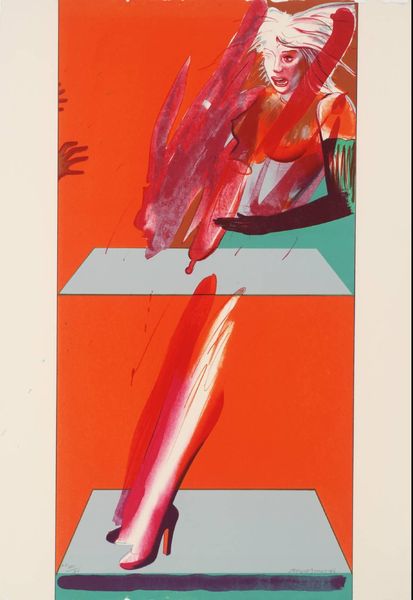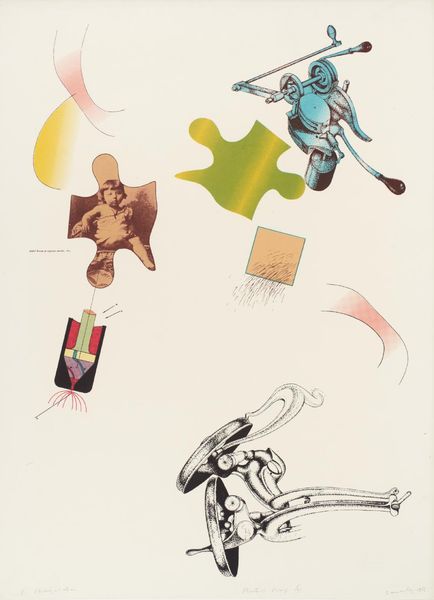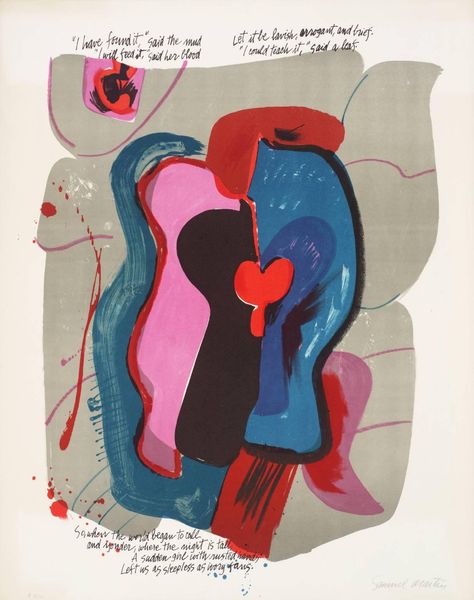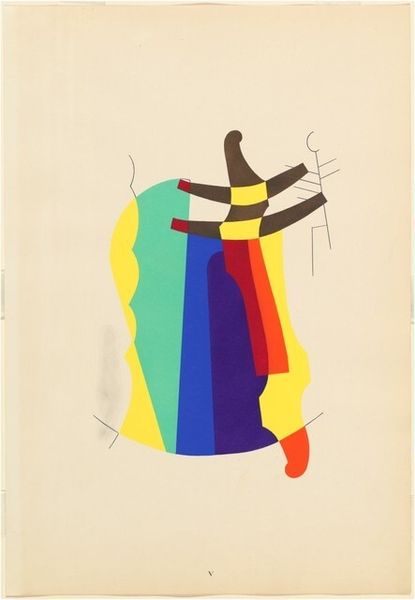
Dimensions: image: 776 x 567 mm
Copyright: © DACS, 2014 | CC-BY-NC-ND 4.0 DEED, Photo: Tate
Curator: Colin Lanceley's "6. Liebestod," currently held in the Tate Collections, presents a fascinating visual puzzle. What strikes you first about it? Editor: It's disorienting yet playful, isn't it? The sharp lines contrast against the smooth gradients, creating a sense of tension, of disparate elements trying to coalesce. Curator: I agree. Lanceley's work often engages with themes of fragmentation and reassembly, reflecting, perhaps, the fractured nature of identity in the post-war era. This piece seems to echo Wagner's opera of the same name. Editor: True. And consider the composition itself. The mechanical drawings juxtaposed with organic, almost psychedelic shapes, creating a visual dialogue. Curator: Exactly, a dialogue that extends beyond the canvas. Lanceley was deeply influenced by mythology, literature, and his own personal experiences. Editor: Looking closer, the meticulous line work suggests a kind of precision while the colorful shapes evoke a sense of freedom. It's a delicate balance. Curator: A balance, perhaps, between control and chaos, between the individual and the collective. Lanceley’s personal symbolism feels almost impenetrable. Editor: Precisely! It's the interplay between these elements that makes the artwork so compelling. Curator: An encounter with Lanceley's "6. Liebestod" is a journey of questioning. Editor: And an opportunity to appreciate the power of visual language and symbolic juxtaposition.
